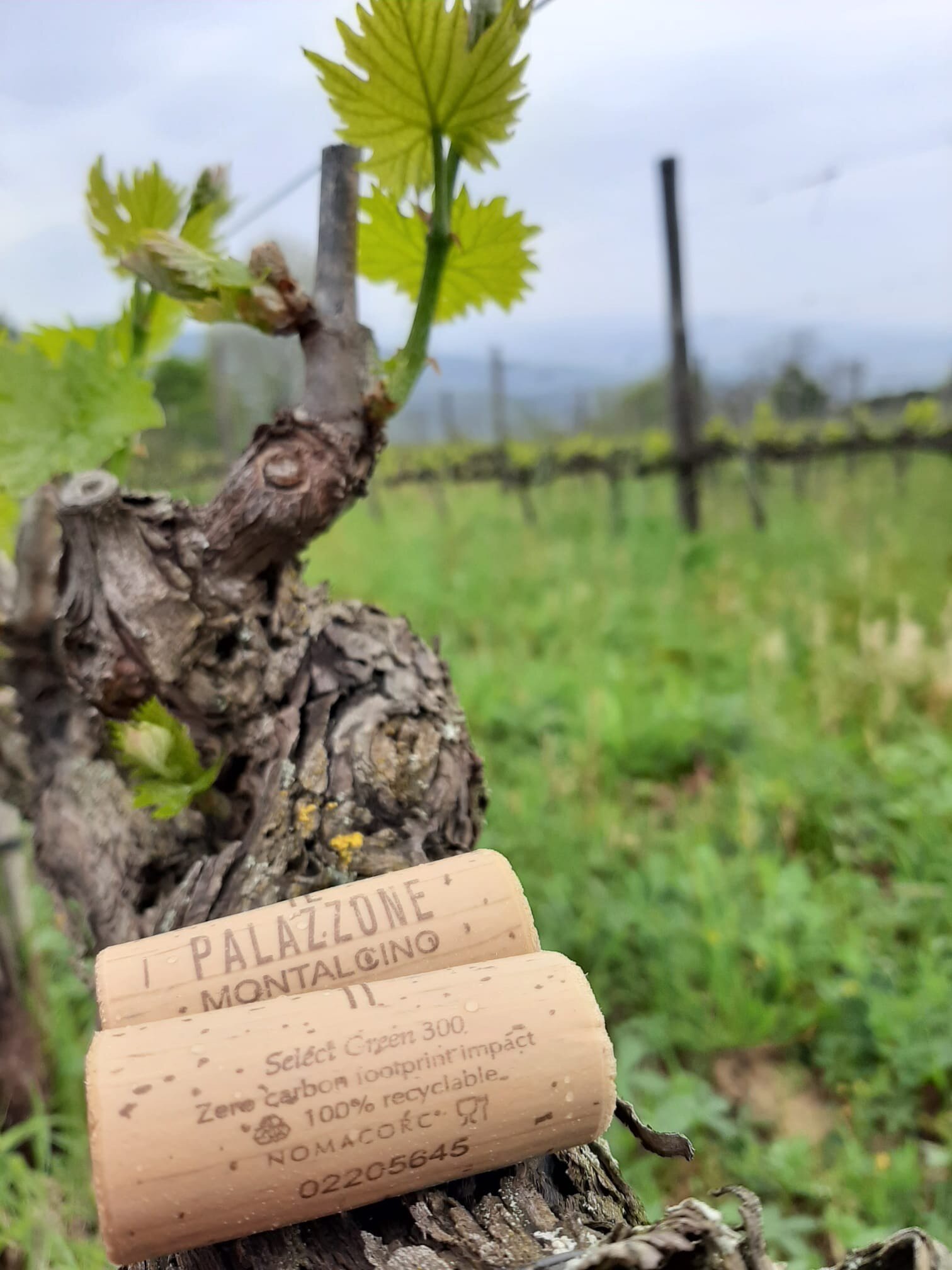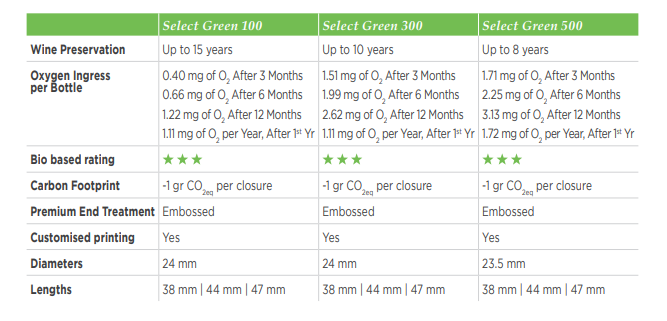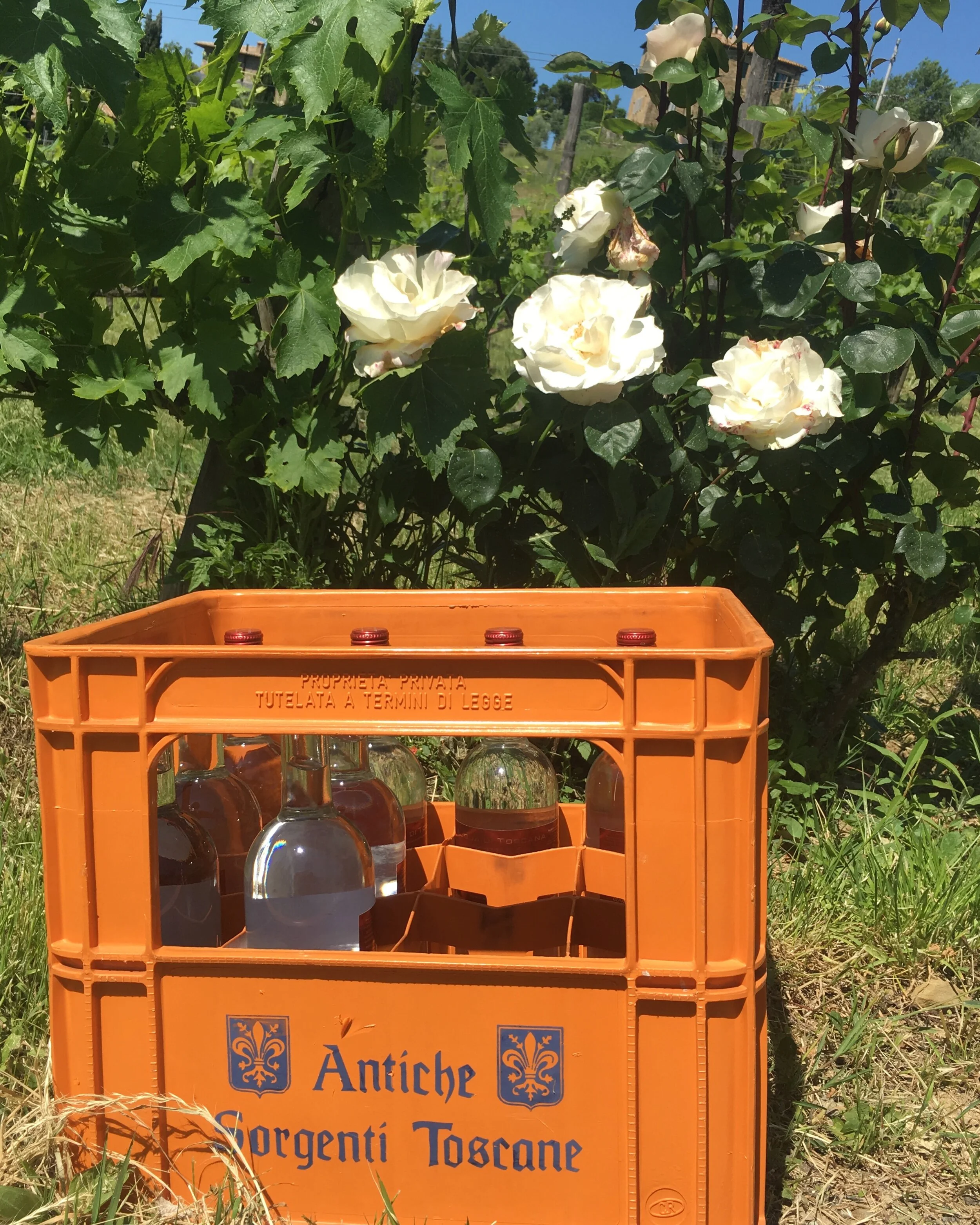Earth Day 2020 - Plant based closures…a sustainable future?
We have been engaged with sustainability for over a decade, lightweighting our bottles back in 2010 and building the cellar with environmental criteria. Our cellarwoman Paola and I are currently reconsidering all aspects of our packaging; biodegradable capsules, paper sealing tape and so on. By the way, industry people – is there any solution to industrial shrink-wrap? I don’t know what took us so long but last June we eliminated single-use plastic from the tasting room by sourcing returnable glass water bottles from Tuscany (see Instagram post here). We had been using glassware made from our bottles since 2012. To be honest, not doing any of the above seems practically negligent these days, rather like planning a new building without wheelchair access.
We extend the same attention to detail to our choice of corks. As well as Brunello di Montalcino, we also make a 100% Sangiovese non-vintage red. This wine is called Rosso del Palazzone. By the end of May – somehow - we will have bottled Lot 01/20 of this wine, a fantastic blend of two vintages; 50% 2016 and 50% 2019. As a concession to Covid we have opted not to make any Magnums of this wine. We have yet to identify a way of crouching together to hand-bottle larger formats without infringing distancing protocol. The total production will be just 6.000 bottles.
The 01/20 will be the 12th incarnation of this wine. In 2018 with Lot 01/18 we switched from natural cork to Nomarcorc Select Green corks. These corks are made from sustainable, renewable Brazilian sugar-cane. They are not biodegradable but they are recyclable. The whole process is beautifully conveyed in under 2 minutes here. What is interesting from a wine-making point of view is that they have three different permeabilities to allow oxygen transmission which is an important consideration.
They also look and feel like a natural cork while addressing the problems of cork-taint, breakage and inconsistent wine preservation. They are made with 100% renewable energy with a minimal use of water – a measly 1 drop per cork - versus the amazing 15 lt. on average per natural cork. Their carbon footprint is negative. For a comprehensive comparison of different wine closures using various criteria i.e. water/energy production costs, this is a great resource and also here. Be warned, it's a minefield!
The first estate to publicly announce their use of these corks was San Polo in Montalcino back in 2013. The Vinventions byline is “plant-based wine closures for age-worthy bottles” and accordingly several produers of Barolo and Amarone are now using them. You might assume that they would be an attractive option for Brunello too but Article 8.2 of the DOCG regulations specifies that only natural closures from a single piece cork (not micro-agglomerated) are permitted.
So for the time being, you will only see these closures for our Rosso del Palazzone but do not think for a moment that this was an careless decision!



